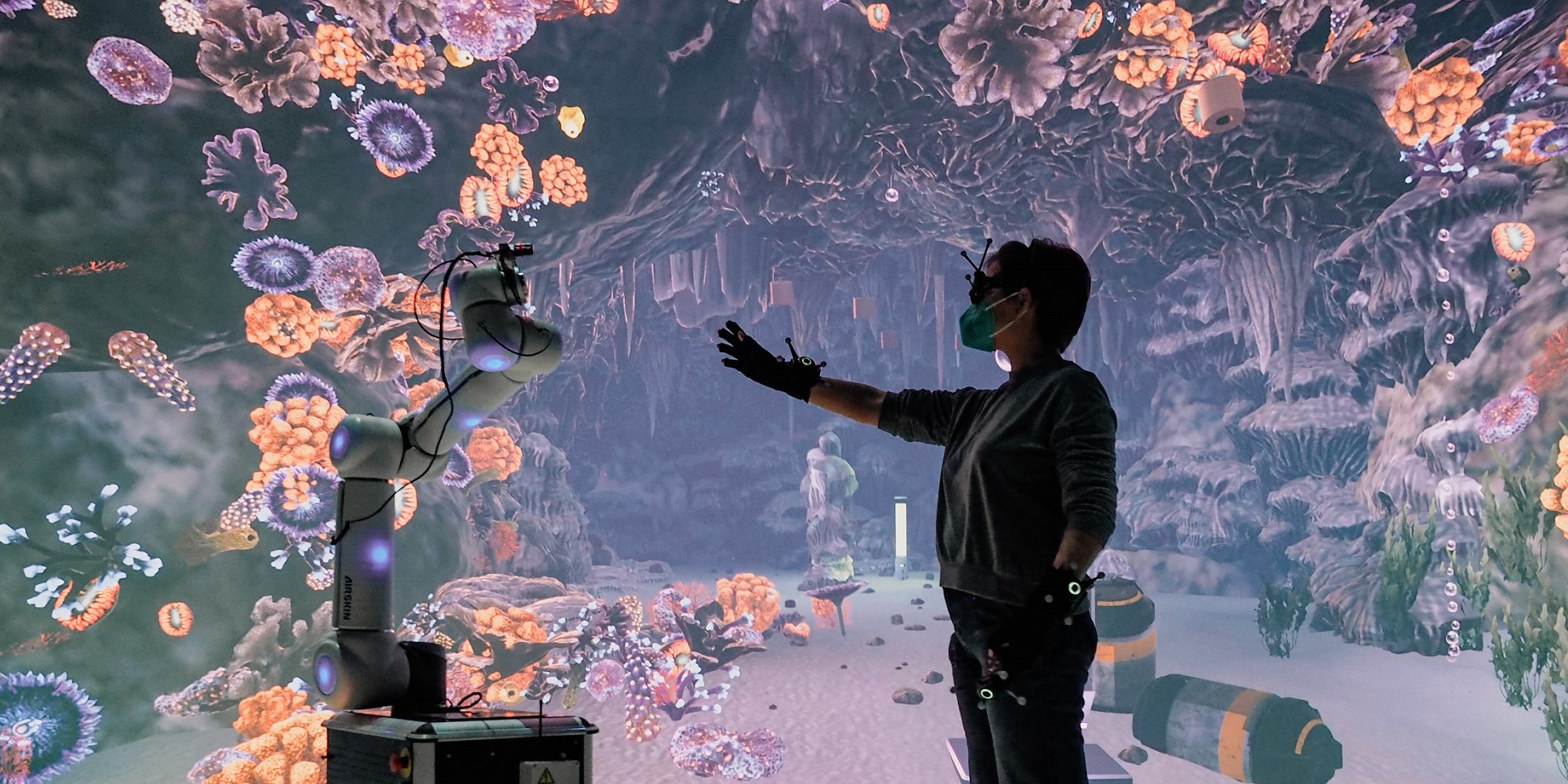Know-how, technical equipment and size: The Deep Space 8K at the Ars Electronica Center in Linz – developed and continuously improved by the Ars Electronica Futurelab – offers unique opportunities to bring research in a wide variety of fields to life. On the one hand, individual participants can use virtual reality to immerse themselves in vast alien worlds where they can communicate with real robots, for example. On the other, the Deep Space 8K represents its own entity in research: as a unique large-scale 3D immersive infrastructure not only for individual users, but also for large user groups of up to 100 people.
While there are numerous commercial solutions for single-user interfaces with virtual reality glasses, the possibility of exploring large immersive experience worlds together in 3D, and interacting collaboratively, has hardly been explored so far. The reasons for this lie in the special nature of a room necessary for this purpose: substantial investment and operating costs meet the need to create suitable content and also to convey it. Immersive spaces for large groups offer unique opportunities for personal experiences as well as for research: In Deep Space 8K, impressive hybrid scenarios can be created with both real and virtual set pieces. The effort of an equivalent physical experimental setup is exorbitantly higher, if not impossible – a whole major city or an underwater lab are not readily available for research purposes.
Communicating with technology – naturally
Unlike being alone in front of a screen or in small rooms with 3D glasses, physicality is an important part of the experience in the Deep Space 8K. This is why groundbreaking research is taking place here on natural user interfaces – the natural ability to communicate, especially via auditory signals, gestures and movements. How can communication with and the operation of technology be self-explanatory, without prior knowledge and additional technical devices? Which interfaces are not even recognized as such by users, but are used organically for interaction with software and hardware?
Back in 2010, one of the best-known humanoid robots made its appearance in the Deep Space for research on this subject: the team from Honda and their ASIMO investigated with the Ars Electronica Futurelab how nonverbal communication between humans and robots works. In “Deep Symphony”, ASIMO used gestures and movements to invite the test subjects to explore an audiovisual environment together.
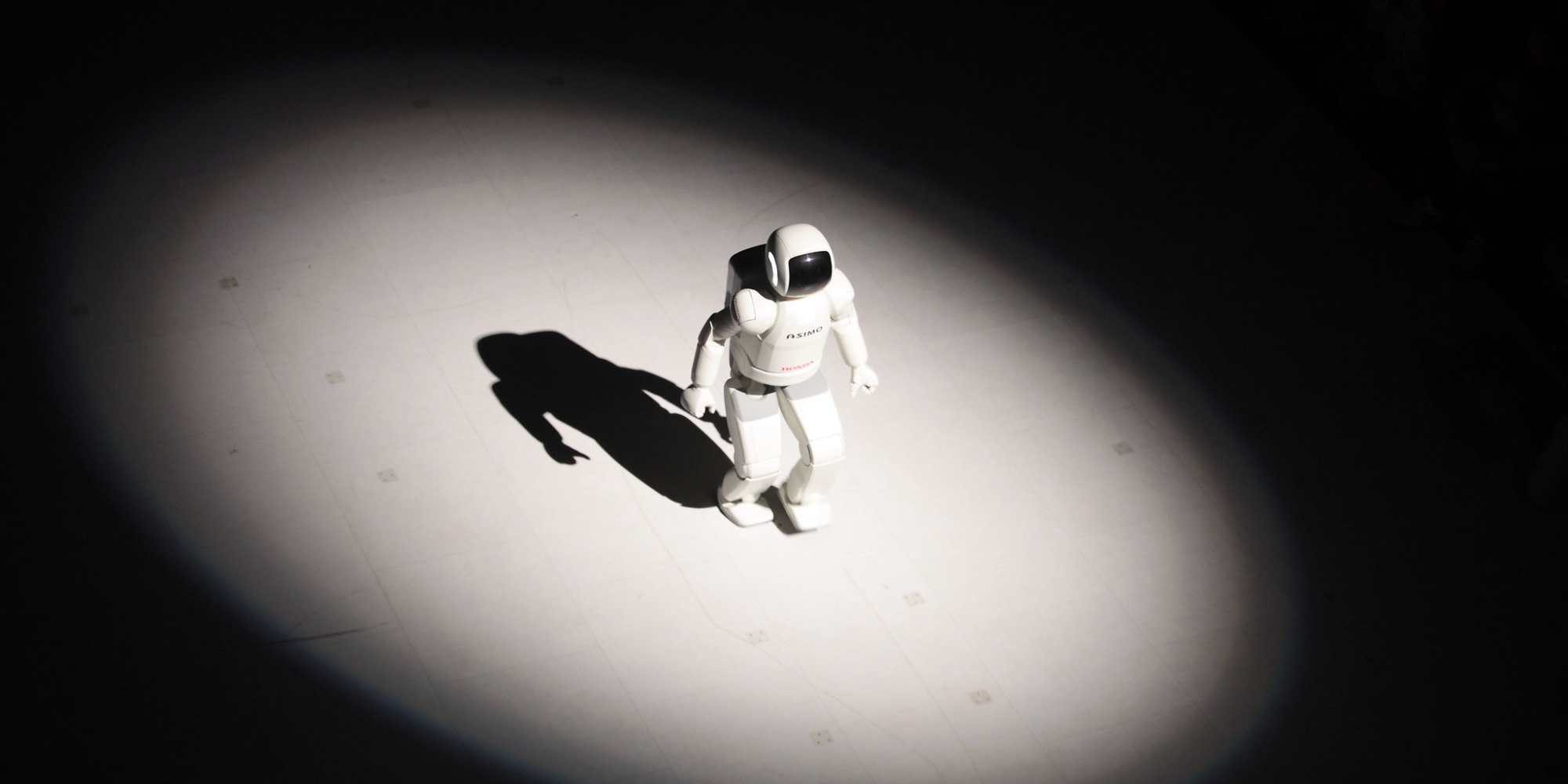

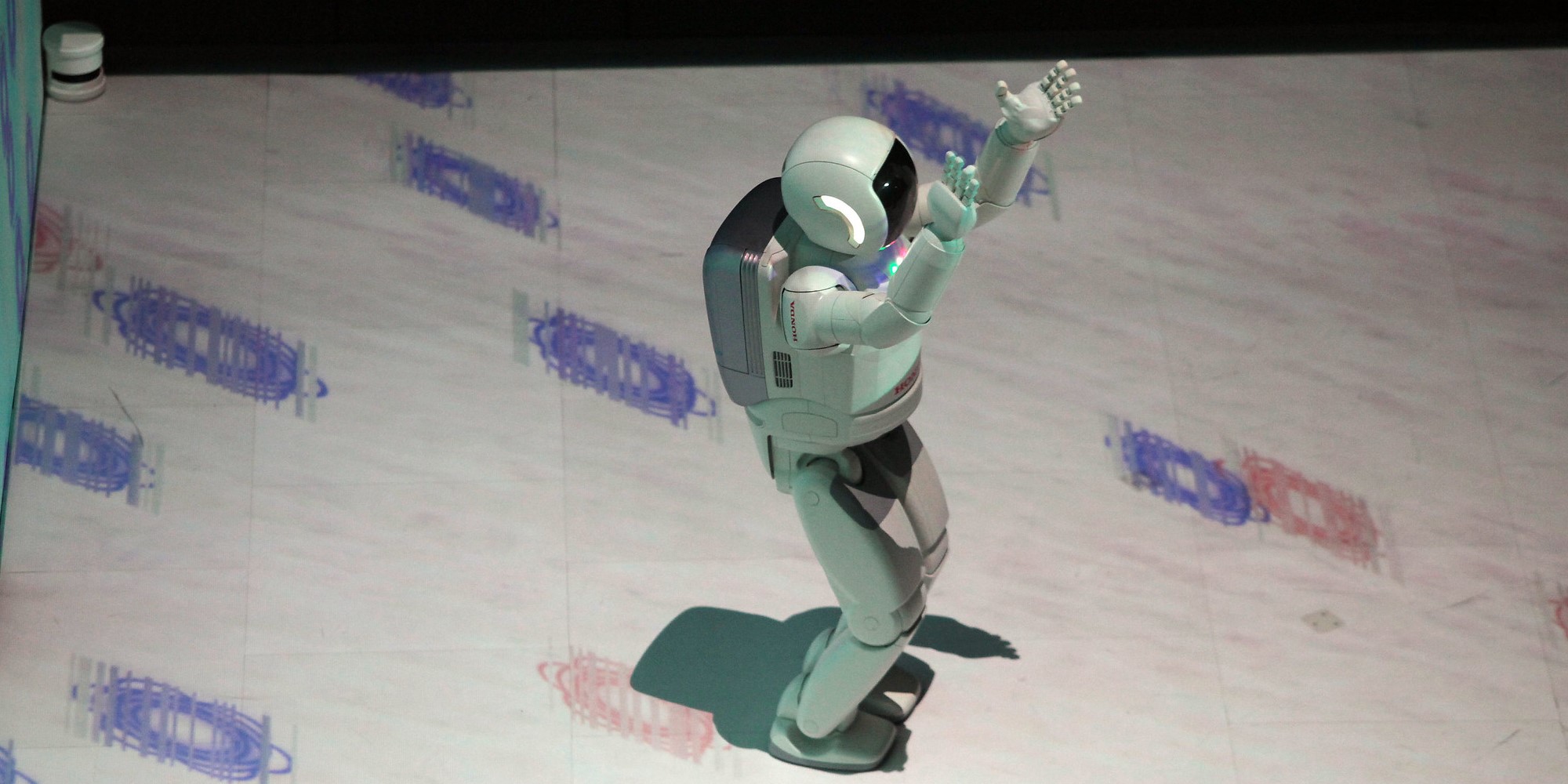
Robots as colleagues
A current example of research in Deep Space 8K is the multi-year project “CoBot Studio” by the LIT Robopsychology Lab at Johannes Kepler University Linz in collaboration with the Ars Electronica Futurelab and five other project partners: How can we communicate with a robot colleague to rid the virtual ocean of plastic? In an experiment in the Deep Space 8K, test subjects work together with a real mobile industrial robot in a fascinating stereoscopic virtual reality underwater landscape. The communication takes place via gestures, light signals and explanatory texts. Surveys are conducted via in-situ questionnaires that appear directly in front of the user in the VR space and are filled out immediately there.
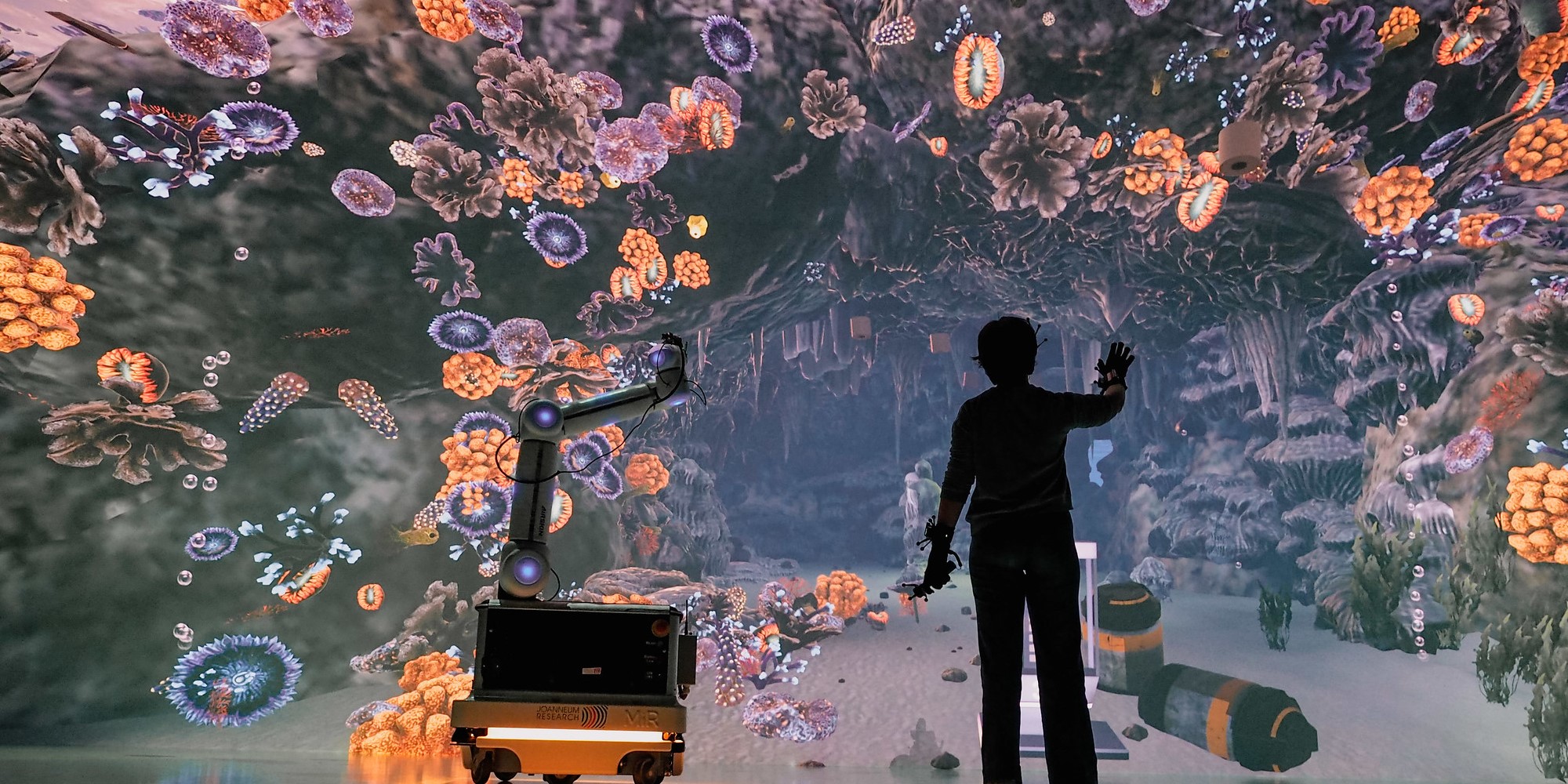
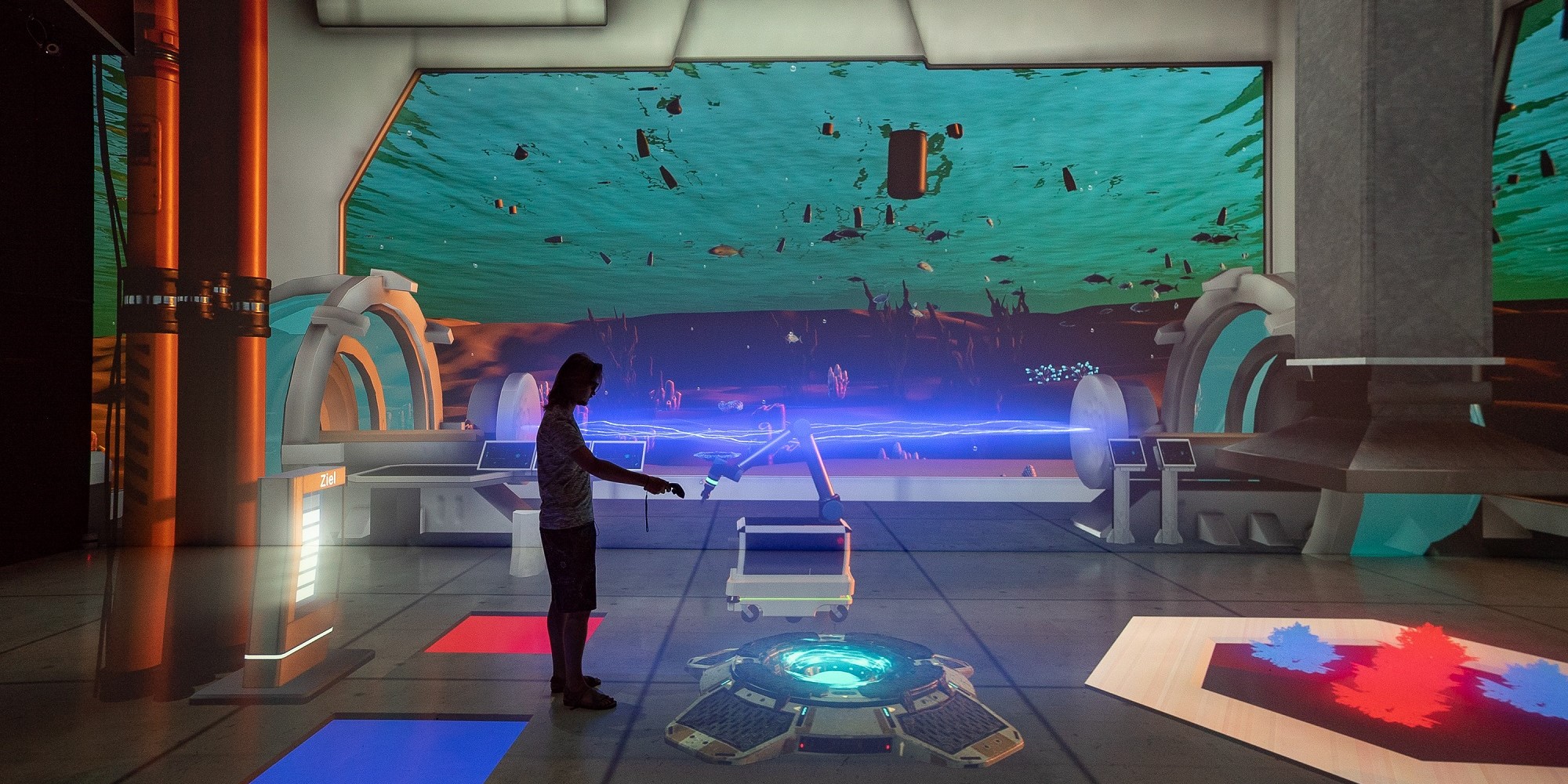
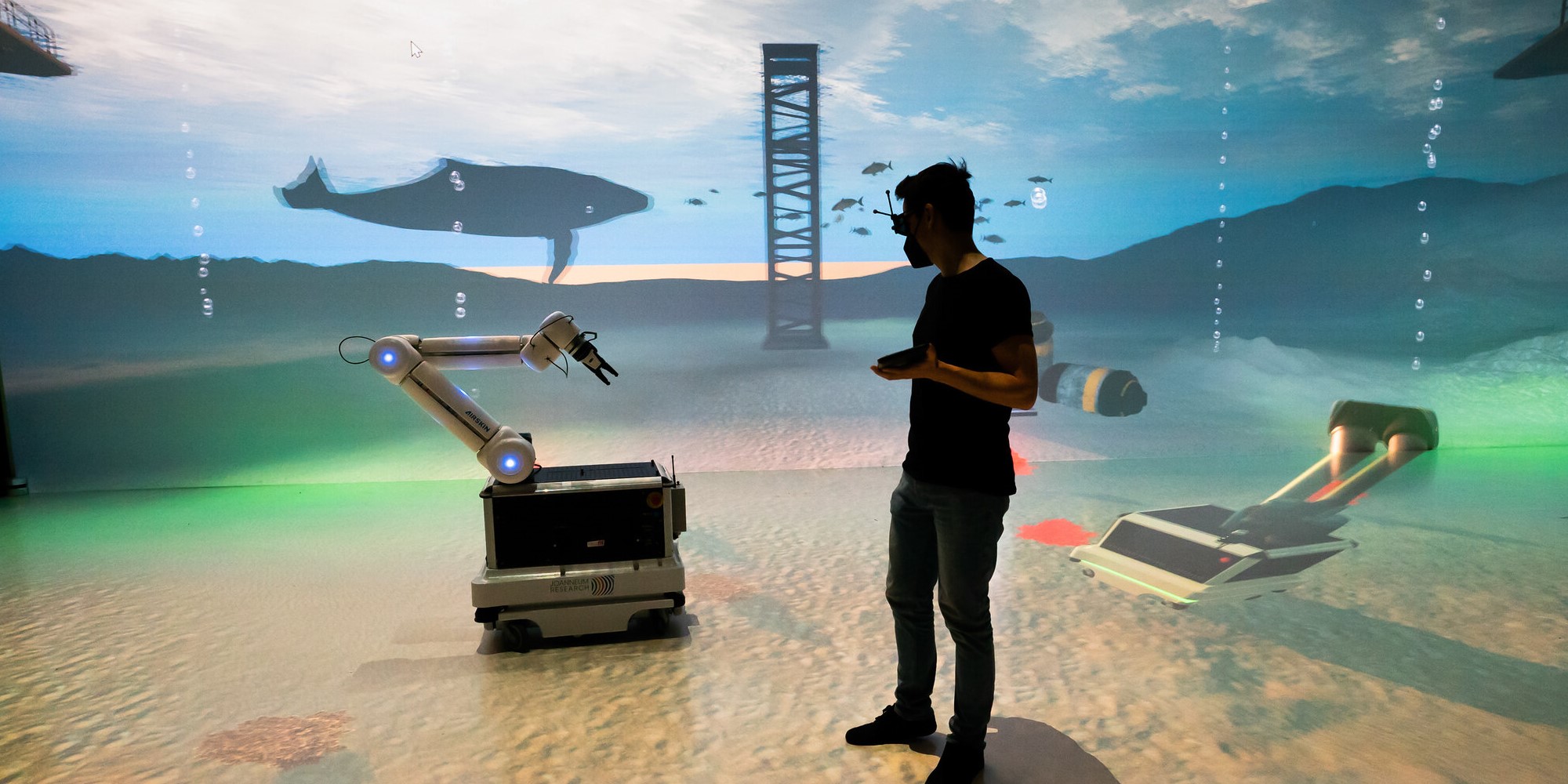
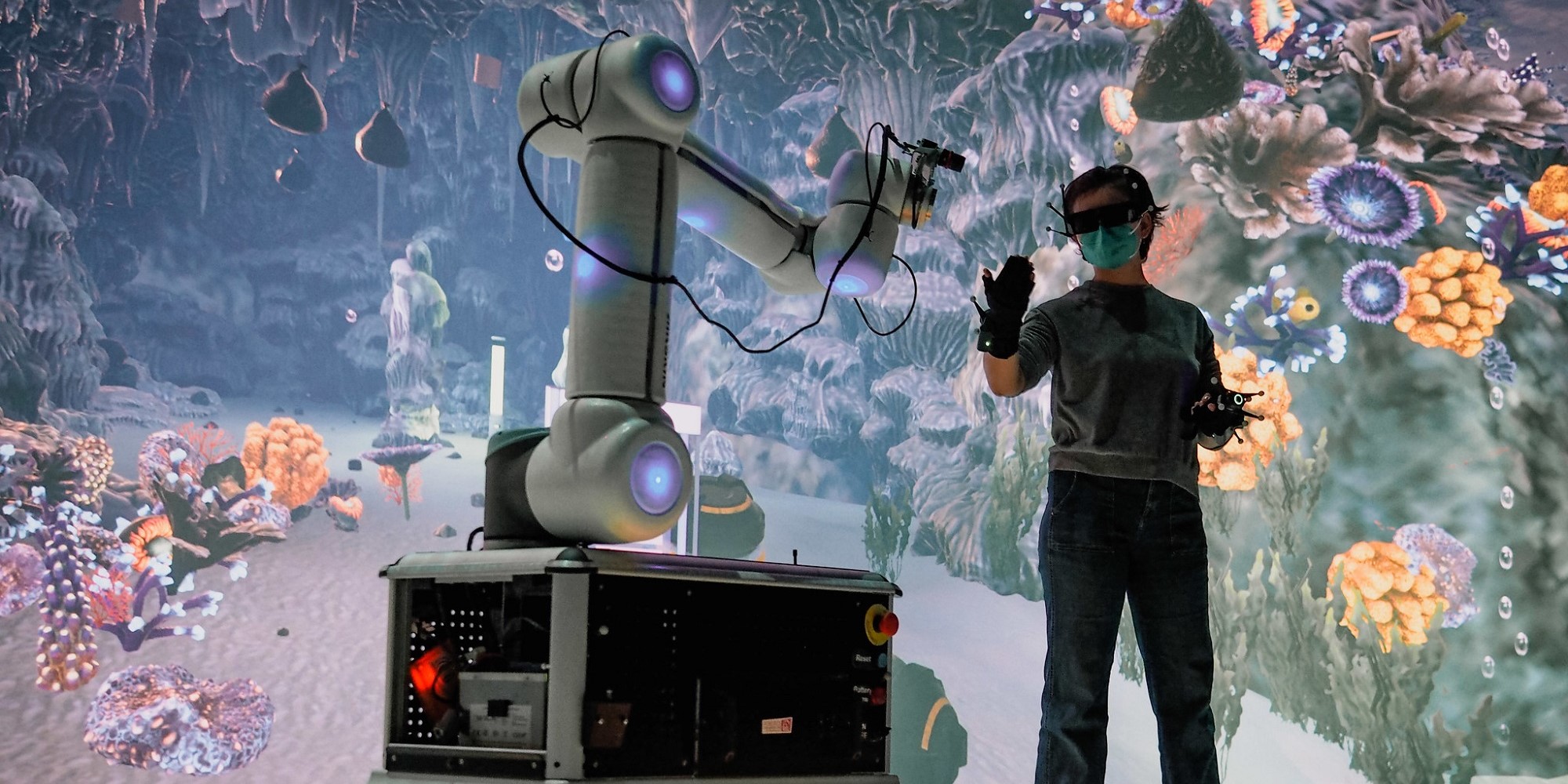
Want to know more? Read part 2 about the research in Deep Space 8K on our blog.
